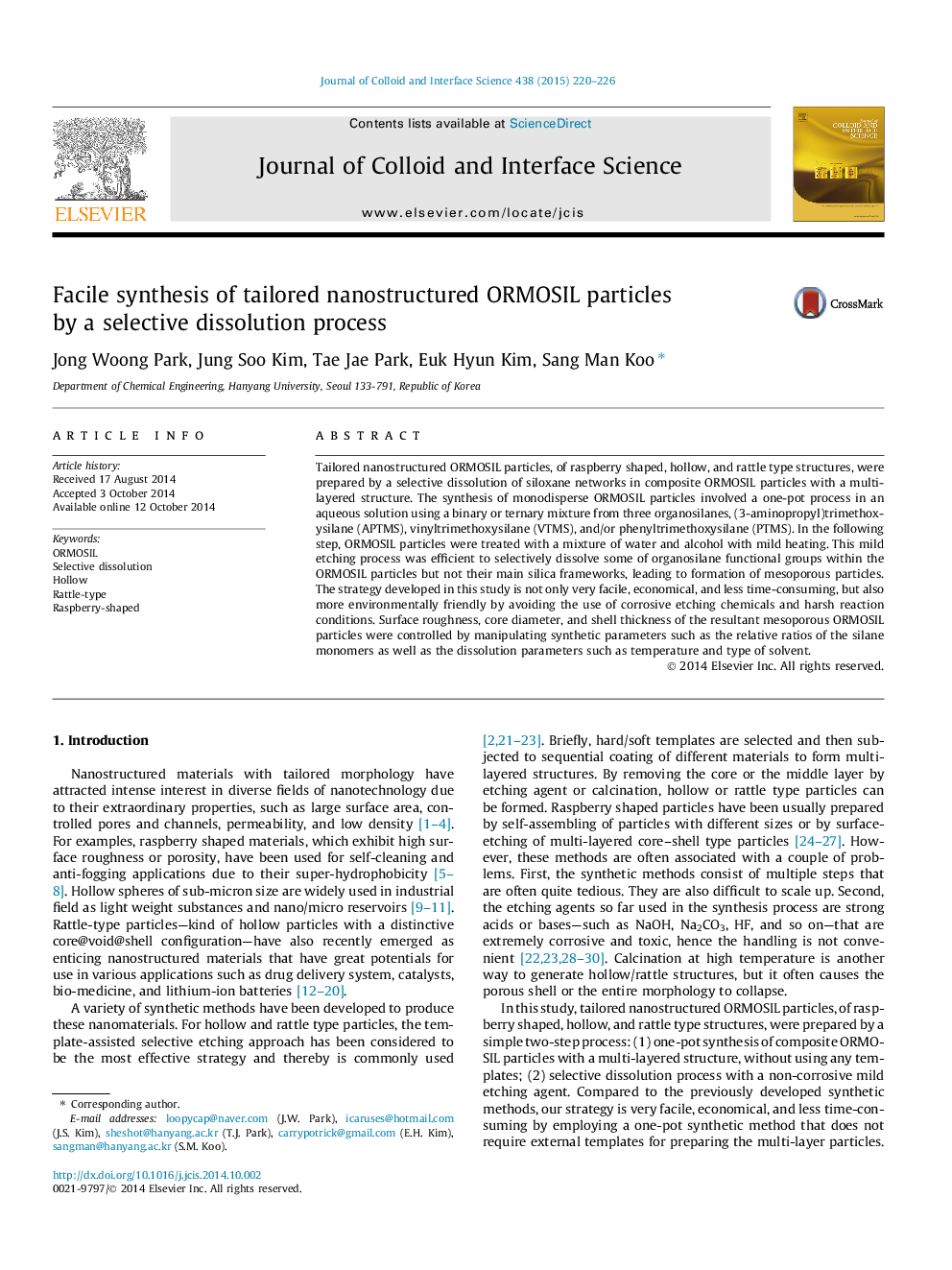| Article ID | Journal | Published Year | Pages | File Type |
|---|---|---|---|---|
| 607044 | Journal of Colloid and Interface Science | 2015 | 7 Pages |
•ORMOSIL particles with mesoporous structure were produced by selective dissolution.•Raspberry particles exhibited super-hydrophobicity with WCA of 153.6°.•ORMOSIL particles were converted to silica particles by heat treatment at 600 °C.•The strategy is facile, economical, and environmentally friendly method.
Tailored nanostructured ORMOSIL particles, of raspberry shaped, hollow, and rattle type structures, were prepared by a selective dissolution of siloxane networks in composite ORMOSIL particles with a multi-layered structure. The synthesis of monodisperse ORMOSIL particles involved a one-pot process in an aqueous solution using a binary or ternary mixture from three organosilanes, (3-aminopropyl)trimethoxysilane (APTMS), vinyltrimethoxysilane (VTMS), and/or phenyltrimethoxysilane (PTMS). In the following step, ORMOSIL particles were treated with a mixture of water and alcohol with mild heating. This mild etching process was efficient to selectively dissolve some of organosilane functional groups within the ORMOSIL particles but not their main silica frameworks, leading to formation of mesoporous particles. The strategy developed in this study is not only very facile, economical, and less time-consuming, but also more environmentally friendly by avoiding the use of corrosive etching chemicals and harsh reaction conditions. Surface roughness, core diameter, and shell thickness of the resultant mesoporous ORMOSIL particles were controlled by manipulating synthetic parameters such as the relative ratios of the silane monomers as well as the dissolution parameters such as temperature and type of solvent.
Graphical abstractFigure optionsDownload full-size imageDownload high-quality image (50 K)Download as PowerPoint slide
